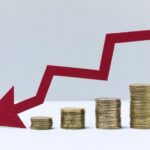Introduction: Understanding Sustainable Supplier and its Economic Impact
In today’s rapidly changing business landscape, companies are increasingly aware that sustainable practices aren’t just a trend—they’re essential for long-term success. At the heart of this movement is sustainable supplier practices, which focus on engaging businesses owned or operated by individuals from minority backgrounds, such as women, veterans, individuals with disabilities, and LGBTQ+ communities, within the procurement process.
Historically, sustainable supplier strategies were often viewed as a social responsibility. However, as data increasingly supports the economic benefits of such programs, they have shifted from a charitable activity to a strategic approach that drives innovation, economic growth, and community well-being. This guide explores the importance of sustainable suppliers, the economic impact of these initiatives, and how businesses can leverage them to unlock significant value.
What is a Sustainable Supplier?
A sustainable supplier is defined as a business that is owned or operated by individuals from underrepresented groups. These suppliers provide goods and services to businesses that recognize the importance of diversity and inclusion in their supply chains. When these businesses are incorporated into the procurement process, they contribute not only their products or services but also unique perspectives and innovative solutions.
The goal of a sustainable supplier program is to build a diverse supply chain that aligns with the company’s values of social responsibility, ethics, and diversity. In the past, the focus of such programs was purely on social good, but recent data highlights the immense economic potential of integrating these suppliers into business practices.
Key Benefits of Sustainable Supplier Programs
-
Driving Economic Growth
Sustainable supplier programs contribute significantly to local GDP growth through a “multiplier effect”. By investing in businesses owned by underrepresented groups, companies help stimulate local economies, creating a ripple effect that boosts other businesses in the community. This approach provides more employment opportunities and increases consumer spending within the area. -
Boosting Innovation and Competitiveness
One of the key advantages of working with sustainable suppliers is the diversity of thought and innovation they bring. These businesses provide fresh perspectives that enhance a company’s competitiveness. Suppliers from different backgrounds often bring creative ideas, leading to more innovative solutions, better problem-solving, and unique product development. -
Enhancing Community Well-being
Sustainable supplier practices go beyond financial growth. They contribute to the well-being of the community by creating jobs, improving infrastructure, and promoting local economic development. By supporting businesses that are socially conscious and ethically driven, companies contribute to a broader vision of sustainable economic development.

Manage Multi-Vendor
Procurement at Scale
Effortlessly handle procurement
across various tiers and vendors.
The Three Key Impacts of Sustainable Supplier Programs
To truly understand the value of integrating sustainable suppliers, it’s important to look at the economic impact analysis (EIA) and how the direct, indirect, and induced impacts of sustainable procurement unfold:
-
Direct Impacts
These are the immediate financial effects of spending with sustainable suppliers. For example, a company’s direct purchases from women-owned businesses or veteran-owned businesses contribute to local spending and revenue generation, which directly boosts the local economy. -
Indirect Impacts
These secondary effects arise from the increased spending within the supply chain. For example, when a business contracts a sustainable supplier, it creates jobs in that supplier’s network and drives business growth within that community. These effects ripple through the economy, supporting industries indirectly connected to the business. -
Induced Impacts
Induced impacts are broader economic gains that result from spending by employees and suppliers of the sustainable supplier. When these businesses grow, their employees and associated businesses contribute to overall economic prosperity by increasing their consumption and investments in the community.
How Sustainable Supplier Practices Drive Business Value
While sustainable supplier practices are beneficial for society at large, they also provide tangible benefits for businesses. Companies that adopt sustainable procurement strategies often experience:
-
Increased Revenue: The fresh ideas and innovative solutions provided by sustainable suppliers can improve a company’s product offerings and customer satisfaction, directly driving higher revenues and profitability.
-
Stronger Supply Chain Ecosystem: The indirect economic activity generated by working with sustainable suppliers supports jobs and businesses within their networks, strengthening the entire supply chain.
-
Improved Brand Reputation: Companies that prioritize sustainability and diversity in their supply chain enjoy positive public relations and enhanced brand loyalty, which can further drive business growth.
The Role of Economic Impact Analysis (EIA) in Measuring Success
An Economic Impact Analysis (EIA) report is a vital tool for businesses looking to measure the effectiveness and outcomes of their sustainable supplier initiatives. Through an EIA, companies can:
-
Quantify the economic impact of their sustainable supplier programs by looking at direct, indirect, and induced impacts.
-
Make data-driven decisions on supplier selection and investment.
-
Demonstrate ROI to stakeholders, showcasing the business and societal benefits of integrating sustainable suppliers into the procurement process.
-
Benchmark progress against industry standards and best practices, ensuring that the company’s sustainability efforts are aligned with industry trends and requirements.
While there are challenges to collecting accurate data—such as varying methodologies and the difficulty of distinguishing short-term and long-term impacts—EIA reports offer an essential framework for understanding the true value of sustainable supplier programs.
Success Stories of Companies Embracing Sustainable Supplier Programs
Several companies have successfully implemented sustainable supplier programs, reaping impressive social and financial rewards. Here are a few examples:
-
Coca-Cola: Coca-Cola’s commitment to partnering with women-owned businesses has led to higher community engagement, job creation, and product innovation.
-
Johnson & Johnson: Through supplier diversity programs, Johnson & Johnson has contributed to local economic development, while also enhancing innovation and reducing costs across its supply chain.
-
IBM: IBM’s inclusive supplier program has not only improved its product offerings but has also increased its market competitiveness by working with diverse suppliers who bring fresh ideas and creative solutions to the table.
These success stories demonstrate that sustainable supplier programs not only benefit the community but also enhance a company’s market standing and profitability.

Automate Compliance Across All Vendors
Track certifications and keep your compliance records audit-ready.
Best Practices for Implementing a Sustainable Supplier Program
To successfully integrate sustainable suppliers into your business model, consider these best practices:
-
Proactive Outreach and Relationship Building
Engage with sustainable suppliers early in the procurement process. Actively build relationships with minority-owned, women-owned, veteran-owned, and other diverse suppliers. Focus on long-term partnerships that foster innovation and collaboration. -
Leverage Technology and Data Analytics
Technology plays a critical role in managing sustainable supplier programs. Use tools and platforms that streamline supplier onboarding, track progress, and provide insights into supplier performance. Analytics can help identify areas for improvement and optimize supplier selection. -
Collaboration and Collective Action
Partner with other businesses, governments, and non-profit organizations to amplify the impact of your sustainable supplier initiatives. Collective action leads to greater visibility, collaboration, and more significant results in advancing social and environmental goals. -
Track Performance and Set Clear Metrics
Establish clear metrics to track the performance of your sustainable suppliers. Focus on measurable outcomes such as job creation, GDP growth, cost savings, and innovation. Regularly review your supplier diversity program to ensure continuous improvement. -
Focus on Sustainable and Ethical Sourcing
Ensure that your sustainable suppliers adhere to environmental and ethical standards. Encourage suppliers to report on sustainability and diversity metrics, and audit them to ensure compliance with ESG (Environmental, Social, and Governance) practices.
Conclusion: Sustainable Supplier Programs as a Catalyst for Growth
Incorporating sustainable suppliers into your procurement strategy is not just a social responsibility—it is a smart business decision that can drive significant economic growth, innovation, and community well-being. By prioritizing diversity, inclusivity, and transparency in your supply chain, you can unlock value that benefits both your business and the broader community.
Sustainable supplier programs offer immense potential for companies to differentiate themselves in a competitive market, while also creating a lasting positive impact on society. Whether you are a large enterprise or a small business, investing in sustainable supplier practices is an essential step toward building a more equitable and prosperous future for all.
By leveraging data-driven strategies and embracing industry best practices, businesses can understand and unlock the true economic potential of their sustainable supplier initiatives, generating long-term value for their organization, communities, and society as a whole..




